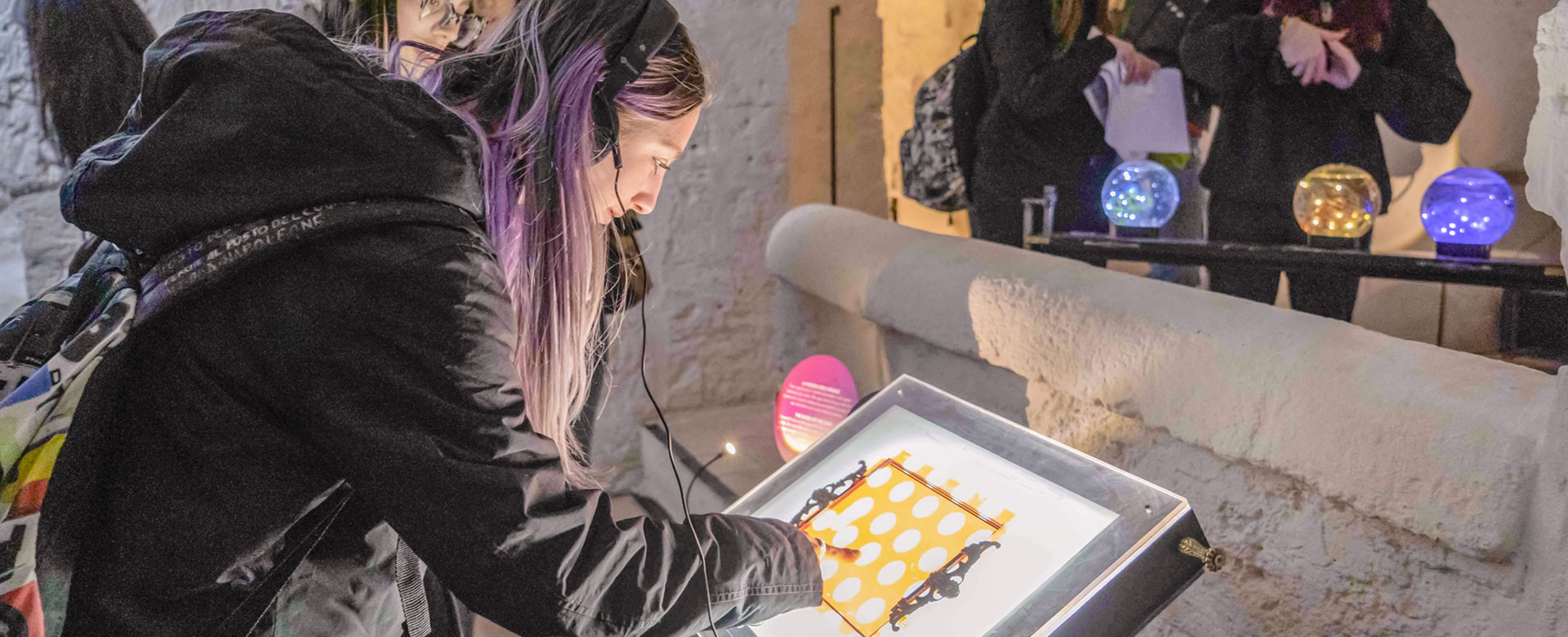
Il museo pop dei piccoli oggetti rifiutati
Dopo due mesi di esposizione ha chiuso le sue porte il museo itinerante che espone frammenti, tracce e piccoli oggetti ri-fiutati raccolti per il progetto M.E.M.O.RI. coprodotto da La Luna al guinzaglio.
Si tratta di un museo che nasce da un viaggio alla ricerca di souvenir e cose fatte a mano tra Europa e Mediterraneo che ha fatto tappa nelle cinque città portuali di Genova, Malaga, Marsiglia, Tétouan e Tunisi e all’interno dei confini lucani tra Bernalda, Matera, Muro Lucano, Potenza e Venosa. Nell’attraversare i luoghi, l’oggetto della ricerca è mutato insieme al senso stesso del souvenir, generando un passaggio dall’oggetto tipico all’oggetto topico.
Che cos’è un oggetto ri-fiutato? Tappi di bottiglia, biglietti aerei, confezioni, foglie, oggetti accidentali trovati in tasca o per strada. La collezione del Museo Euro-Mediterraneo dell'Oggetto RI-fiutato presenta Oggetti rifiutati non per loro natura, ma perché “fiutati di nuovo”. Oggetti che scartiamo in maniera automatica e spesso irragionevole e che possono invece trovare nuova vita.
Si tratta di un museo pop, un museo popolare che potrebbe essere allestito da chiunque perché fatto di piccoli oggetti, oggetti di poco conto frutto di incontri occasionali: frammenti di pietre, fili e tessuti riletti attraverso caleidoscopi, manopole e lenti d’ingrandimento.
Nella cornice della Chiesa Rupestre Santa Maria de Armenis che ha riaperto le sue porte dopo anni di chiusura per ospitare i contenuti del programma culturale di Matera 2019, dal 3 maggio al 7 luglio sono stati esposti tutti gli oggetti rielaborati come atto di rispetto verso la memoria che portano con sé, ma anche come gesto di salvaguardia del pianeta e quindi di noi stessi. La magia del M.E.M.O.RI. sta proprio nella narrazione di questi scarti e nell’incontro interattivo con tali oggetti. Il visitatore infatti è invitato ad attivare una "mano-missione" ovvero a mandare la sua mano in missione per stabilire un contatto diretto con il reperto e accedere alla sua memoria interna.
Nei 30 giorni di apertura M.E.M.O.RI. ha intercettato circa 1300 cittadini temporanei provenienti dall’Italia e dall’estero ma soprattutto dal mondo delle scuole, università, associazioni, fondazioni e centri estivi coinvolgendo adulti e bambini, educatori, docenti, gruppi associativi e pubblici con disabilità.
La collezione è divisa in un Anarchivio seguito da 5 sezioni che prendono il nome di Stanze, spazi in cui si invita a stare, a darsi tempo, rallentare, esplorare. L’Anarchivio è un archivio insolito che conserva, attraverso una raccolta di documenti e testimonianze, la memoria degli oggetti esposti e della metodologia di ricerca adottata nel processo di indagine. La Stanza dei Segni è lo spazio della mano che sfiora, stringe e affonda, ambasciatrice del nostro corpo che nel toccare lascia un segno, deposita un senso, sancisce il suo passaggio. La Stanza dei Frammenti è il luogo della fragilità e delle cose piccole, in cui gli oggetti parlano attraverso i loro resti e i dettagli, piuttosto che tramite la completezza. La Stanza delle Cadute è il raduno dei reperti più umili, raccolti da terra durante gli attraversamenti nelle botteghe artigiane; è il luogo in cui parlano le cose che cadono e che si perdono: segatura, fili, avanzi di lavorazione, bottoni. Nella Stanza delle Ripetizioni i reperti collezionati celebrano la ciclicità, il ritorno, la circolarità, le forme della materia. L’ultima stanza, quella delle Chimere aperta il 27 maggio è ispirata dalle suggestioni artistiche dell’artista giapponese Kaori Kato sull’universo del mito. È lo spazio in cui si avanza verso il futuro cavalcando suggestioni che hanno radici nel passato: oggetti, manufatti, attrezzi da lavoro e visitatori si trovano insieme ad essere parti di una stessa creatura, elementi della medesima struttura.
Ogni sala presenta un'opera in prestito ed è quindi collegata ad un Museo Spontaneo, un sistema diffuso di musei in rete aperti in diversi luoghi da cittadini, persone, associazioni. Sono sezioni esterne del M.E.M.O.RI. che, attivando un vero e proprio protocollo museologico per allestimento e inaugurazione, vengono aperte in altri luoghi ad opera di chiunque voglia trasformare la propria collezione privata in esposizione, racconto, accoglienza: ce n’è uno a Potenza a casa di un'artista, a Genova in una palestra di Tai Chi, nel Liceo artistico di Matera e altrove in Europa. Con l'app MemorAbilia, costruita appositamente per il progetto, è possibile scoprire di più sull’opera in prestito, su cos'era, chi la ospita e la sua dimensione nel Mediterraneo. L’applicazione, scaricabile sia su smartphone Android che iOs, arricchisce la fruizione del M.E.M.O.RI. con un’audioguida in inglese e italiano, approfondimenti scientifici, animazioni 3D e racconti in rima.
Tanti eventi e appuntamenti hanno anticipato, integrato e arricchito la dimensione espositiva del museo M.E.M.O.RI. al fine di accogliere nuove riflessioni sul tema del Mediterraneo, delle relazioni, dei linguaggi e dell’arte. Tra gli ospiti dei laboratori il fondatore del Museo Tolomeo Fabio Fornasari, l’antropolo e giornalista Duccio Canestrini, il fantasiologo Massimo Gerardo Carrese, il foto reporter Antonio Politano, le artiste Kaori Kato, Hassan Echair e Farah Khelil, la curatrice Maria Rosa Sossai, Fabio Bonelli e lo scrittore Gianluca Caporaso.
Ora che ha chiuso l’esposizione a Matera, la collezione del M.E.M.O.RI. riprenderà il suo viaggio approdando prima a Potenza, poi al Festival della Scienza di Genova, Bologna, Anversa e Malaga e chissà che non si arricchisca di ulteriori oggetti da ri-fiutare, rielaborare e salvaguardare.





